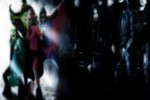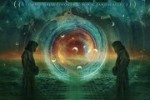
HANOI ROCKS – MICHAEL MONROE
SPACE GIANT
RONNIE MONTROSE
ROB BLAINE’S BIG OTIS BLUES
RESTLESS DIESEL
MICHAEL LEE FIRKINS
BASSIXX
Bassixx is an exciting dynamic fusion group playing music by Jill Scott, Soulive and Chic Corea. The band features a horn section and a wonderful vocalist,Brittany Thompson.
BRIAR PATCH
Briar Patch is a pop rock band featuring 3 great vocalists and a superb rhythm section. The group performs tunes from 60’s British Pop to the contemporary sounds of Allison Krause and Rascal Flatts.
TRENCHTOWN

DEFEATER
Defeater is a punk rock band.
MILES AWAY

GENTLEMEN HALL
BALLROOM BOXER

TOUBAB KREWE
THE SADIES
ANDRE WILLIAMS

BISON B.C.

WHITE MYSTERY
White Mystery is brother-sister rock’n’roll duo Miss Alex White & Francis Scott Key White from Chicago. The siblings tour worldwide, earn rave reviews from MTV, VICE, Sound Opinions, Pitchfork – and currently represent the Levi’s #equipped campaign. Their fourth full-length DUBBLE DRAGON is available on double vinyl and iTunes now.
SERGEANT GARCIA

MAD PROFESSOR
Soon after Mad Professor launched the now legendary Dub Me Crazy series featuring “Beyond The Realms Of Dub” “Escape To The Asylum Of Dub” and “Dub Maniacs On The Rampage”, the series became on top with the variations of sounds and effects. Whilst all the music was flowing, Mad Professor was gradually developing the studio and by the mid Eighties a 24 track 2 inch state- of the art studio with its own unique sound, Sandra Cross and Pato Banton had No. l hits, Macka B. joined Ariwa and had hit album “Sign of the Times”. By the end of the Eighties, Macka B & Kofi scored No. l with “Dread A Who She Love” and Intense with “Mellow” & “On My Mind”. The Nineties kicked of with another hit from Macka B & Kofi “Proud of Mandela” and Intense – “You are the One”. In 1991, Professor met U-Roy and recorded the classic “True Born African” which topped the charts in August of that year. By 1992, Professor slowed down the output of the label and concentrated on the touring circuit resulting in successful tours of Germany, Holland, France, Sweden, Denmark, Poland, Ireland, Spain, Austria, Italy, Yugoslavia, USA, Canada. The tours are usually under the banner of the label. By Spring 1994, The Ariwa album catalogue increased to 104 LP’s recent productions being “Heritage” Sharifa, “Mr Government” – Peter Hunningale. “Black Liberation Dub” Mad Professor was the launch of a new dub series. Also the studio was updated to 48 track or 24 – 24 recording. The Professor has new acts waiting to break the surface under the banner ARIWA – the Yoruba word for communication, artistes such as Kofi, John Mclean, Vitality, Lorna G, Peter Hunningale, Danny Red, Lindy Layton, Tracy Spencer, The Boom, Massive Attack, Jah Shaka, Sade, Brilliant, Clementine and The Orb have benefited from the Mad Professor’s touch, the Nineties also have brought the Prof, into the realms of the remix market.
TWILIGHT CIRCUS

40 WATT SUN
40 Watt Sun is the musical project of singer, guitarist and songwriter Patrick Walker, founded in early 2009 following the dissolution of his previous band, Warning, one of the most important, highly regarded and influential bands to emerge from the ‘90s doom metal scene.
The music of 40 Watt Sun is characterised by spare and deliberate arrangements, down-tempo rhythms, and Patrick Walker’s poignant and idiosyncratic vocals and introspective, often darkly-confessional lyrics. Hank Shteamer of Rolling Stone magazine has described the band’s music as “a poetic, gradually unfolding dirge rock”.

ZO2

VIFOLLY

EVERGREY
Evergrey is a progressive metal band from Gothenburg, Sweden. The band was founded in 1995 and released its debut album, The Dark Discovery, in 1998. After a minor hiatus the band returns with its ninth album Hymns for the Broken on 26/30 September 2014.

SABATON

IMPERATIVE REACTION
In 2008, Imperative Reaction released Minus All and embarked on its most ambitious headlining tour to date. Shortly after the completion of the tour the band added guitarist/keyboardist Adam Vex (Seraphim Shock) and the live chemistry was solidified once and for all.
In 2009, the band took time off from writing to hit the road with fellow Metropolis Records artist, Psyclon Nine. The co-headlining tour, named “The Ruina Tour”, saw the bands playing to capacity crowds across the US.
2010 was spent holed up in the studio creating the band’s most ambitious album to date. Imperative Reaction is an electronic rock masterpiece that showcases a band in its prime; ready to blow any preconceived notions out of the water. There is no escape.

GOD MODULE
God Module combines elements of harsh Techno, Darkwave, Goth and Industrial. Pounding beats mix with hypnotic synth hooks, deranged film samples and psychotically-effected vocals to make up a sound that is as disturbing as it is danceable.
SYSTEM SYN

LUDOVICO TECHNIQUE
The name: The name itself stems from the drug-assisted aversion therapy found in the novel and film “A Clockwork Orange”, in which the patient is forced to view violent imagery while injected with experimental medication in an attempt to condition the subjects behavior.
The sound: It is harsh industrial music highlighting the dark aspects of the human experience as well as the depths to which the human mind can deteriorate.

ATARI TEENAGE RIOT

THE GOTHSICLES
THE GOTHSICLES are DANCE DESPERADOS WHAT HAIL FROM CHICAGO and are fronted by Brian Graupner. From dimensional rifts and the sea’s cold abyss emanates HYPERACTIVE INDUSTRIAL THAT’S FULLY COMBUSTIBLE. It’s mostly four on the floor EBM for nerds.
JYROSCOPE
THE NATURALS
DJ ITCH13
JEFF THE BROTHERHOOD

LICH KING
We’re not named after a World of Warcraft character and our 4th album cover has nothing to do with Adventure Time. Thanks so much for asking though.
The point was to create new old-school thrash metal in the vein of EXODUS, VIO-LENCE, S.O.D., SLAYER and others. Lots of bands in the new wave of thrash these days are doing just that, but where we stand out is that we admit it.
Tom Martin started Lich King as a one-man project around 2004, as a goof. People seemed to like the music. Our first two albums were released as a solo project posing as an actual band. In 2009 Tom cannibalized a local thrash act called AGES AGO and formed Lich King as a true band for the first time.
We think the sound of thrash was perfected in the 80’s and we’re not trying to add anything to the mix. We’re just coming up with riffs and songs that the old masters didn’t. Despite that fact and our best efforts, we seem to be developing a signature sound. Dammit.
We’ve had five full-length albums since 2007. Each features fast, headbangable riffs in modern stomp anthems, a sometimes comedic yet always violent songwriting sensibility, art and design from Tom Martin, a marked step up in quality from the previous release, and an awesome logo and a mascot.
…A mascot that is not affiliated with a video game.

VINDICATOR
Cleveland, Ohio… A town where sports come to die and metal comes to live. A city that has seen it’s share of metal titans by their own rights. Destructor, Nunslaughter, Purgatory, Midnight, Soulless, Black Death and many more. In two thousand five the city would give birth to another bastard of speed and aggression… Vindicator would tear down the walls and burn the scene to the ground. Quickly earning respect from the old guard and garnering new fans with every show, the band quickly propelled to the forefront of the thrash resurgence with acts like Warbringer, Merciless Death, and Bonded By Blood.
Vindicator continue to unleash their signature brand of thrash metal to die hard fans of the genre and the unsuspecting alike. Years of consistent touring has created a solid fan base amongst the truest of metal warriors. Following the release of 2008’s There Will Be Blood, 2009’s split Outbreak Of Metal (with tuetonic terrors, Metal Witch), and 2010’s The Antique Witcheries, Vindicator cemented their place in the U.S. thrash scene.
Some retooling of the band’s lineup has them poised to launch their next assault on the metal masses in the form of Vindicator’s upcoming third full-length release. Fans can expect a sound that is true to the roots of Thrash, yet fresh and exciting with a new level of energy and musicianship.

TERROR IN HIS PRESENCE
Terror In His Presence (TIHP) is a Metal band from Chicago IL. TIHP started in spring of 2010, and through many changes we have gotten to the point we are at now. Our main goal is to bring back the old school sounds while still keeping a new, fresh, and heavy sound.

GUTTERMOUTH
Huntington Beach, California-based punks Guttermouth formed in 1989, comprising vocalist Mark “Mercury” Adkins, guitarists Derek Davis and Scott Sheldon, bassist Stever Rapp (who replaced original bassist Clint Weinrich), and drummer Captain James T. Nunn. Debuting a year later with the single “Puke,” Guttermouth issued their debut LP, Full Length, in 1992, followed in 1994 by Friendly People, their first effort for new label Nitro Records. Guttermouth resurfaced in 1996 with Teri Yakimoto, followed a year later by Musical Monkey; their first concert LP, Live from the Pharmacy, appeared in 1998. Their sixth album, Gorgeous, was issued a year later, featuring new drummer Ty Smith; Covered with Ants followed in mid-2000, marking their first for Epitaph.
Guttermouth are studio hounds; they returned to the punk rock scene in fall 2002 when the ambitious Gusto was released, and came back for more in 2004 with the scathing Eat Your Face (with guitarist Don Horne and ex-Slick Shoes bassist Kevin Clark now on board). That same summer saw the departure of drummer Smith to concentrate on his side project Bullets and Octane; the outspoken band also reportedly got kicked off the Warped Tour in August. Adkins later clarified that they left the tour by choice, sickened by the ignorant political comments spouted during various bands’ sets. After departing Epitaph Records, the group was officially added to the Volcom Entertainment roster in late 2005. Guttermouth then contributed the track “April 29th, 1992” to the Sublime tribute album Forever Free, and released their installment of the Beyond Warped Live Music Series in January 2006. The band’s tenth album, Shave the Planet, appeared that August, with Adkins, Sheldon, and Horne joined by original bassist Weinrich and drummer Ryan Farrell. After promotion for Shave, the band didn’t issue new material for a full decade. When they re-formed, the new lineup consisted of Adkins, bassist Justin Van Westbroek, and guitarist Geoff Armstrong. The outfit released a pair of EPs in 2016: Got It Made arrived that summer, while New Car Smell was issued that winter. ~ Jason Ankeny, Rovi
THE NEW THREAT
JEFF BROWN
BLACK LUNG OF BORGATA MOB
FLAMETHROWERS
MISMATCH
A PHOTO FINISH
DJ HAHA

ADORA
Staring in early 2010, Adora takes foot in the underground Chicago music scene consisting of drummer Chris Eckstrum, vocalist Stormie Radtke, guitarist Michael Drew, and Keith Pink on piano. The band has been writing and growing as a four-piece, putting out classy grooves with catchy dark hooks. Casey Bates, Ed Littman, Matt Dalton, and D.R.U.G.S. vocalist, Craig Owens, are renown engineers that took producing roles of the band’s first EP titled “Save Yourself.” The band hit hard on the stage later that year at a sold out House Of Blues performance. Following the hype they continue to their energy to places such as the Chicago Metro, Double Door, and Cornerstone Festival just to name a few.
VREID
KAMPFAR
NECRONOMICON
Many say that Montreal (Quebec) is the Metal capital of North America. The abundance of people supporting their scene is outstanding, so is the ingenious song writing of its bands. Among the most extreme acts building the scene since the early 90s, we recall – Gorguts, Kataklysm, Cryptopsy… and NecronomicoN. Officially formed in 1991 by guitarist/frontman Rob “the Witch”, NecronomicoN has been in constant evolution ever since, creating a fusion of atmospheric melodies and groundbreaking metallic attack. “Morbid Ritual” is what initiated the process, revealing 5 songs of Occult Death Metal and critically acclaimed in several countries. Unfortunately the band’s next release was delayed due to numerous complications, however NecronomicoN was able to optimize its live performance, playing throughout the nation and thus gaining higher recognition. They were by then considered as one of the main acts in the Canadian Metal scene.
OV PLAGUES

BLOODIEST
Darkened blend of noise rock and heavy psychedelia.

MIKE DUNN

DJ EMANUEL

DJ BOXX
MATTBOYWHITE
DJ MANNY MUSCLES
DJ WHITE OWL
THE BUM MACHINE

GRAVE

BLOOD RED THRONE

GIGAN
GIGAN is the brain-child of founding member; multi-instrumentalist and lyric/conceptual mastermind Eric Hersemann. GIGAN’s existence began more than a decade ago in 2005, after Hersemann’s stints in Tampa, FL’s Diabolic and Hate Eternal. Prior to that, Eric’s time was spent sharpening his blades in his hometown of Chicago, IL with the likes of Chicago legends Burnt Offering and Death-Thrash innovators Lord Blasphemer. After writing, recording and releasing GIGAN’s “Footsteps of GIGAN” demo and the first two GIGAN albums (Order of the False Eye on Napalm Records and Quasi-Hallucinogenic Sonic Landscapes on Willowtip Records) in Tampa, Eric relocated to his roots in Chicago and began the writing process for GIGAN’s critically acclaimed masterwork : “Multi-Dimensional Fractal Sorcery and Super-Science”.
“Multi-Dimensional Fractal Sorcery and Super-Science” was recorded with Eric’s longtime partner in crime; engineer Sanford Parker (who has recorded all three GIGAN albums) , and released in October 2013 on Willowtip Records, to almost universal praise and enthusiasm. In addition to worldwide coverage and publicity in the form of interviews and rave reviews, GIGAN has continued to be blessed with amazing touring opportunities both domestically and internationally. Having been a dedicated touring act for ten years GIGAN has been able to bring Hersemann’s twisted visions around the world; much to the delight of GIGAN’s ravenous and open minded fan base. GIGAN has been fortunate to share the stage and tour with Cattle Decapitation, Psyopus, Lightning Swords of Death, Grave, Immolation, Vital Remains, Misery Index, Belphegor, Blood Red Throne, Jungle Rot, Pyrrhon, Artificial Brain and many more. GIGAN’s first foray into the European concert markets saw them on tour with their peers Ulcerate (Relapse Records)and Wormed (Season Of Mist Records) in October 2014. The tour went well enough that GIGAN was immediately invited back to headline a tour of their own in Europe in October 2015! After returning from their second European tour, Hersemann began the most recent writing process and next musical evolution of GIGAN.
“Undulating Waves of Rainbiotic Iridescence”; GIGAN’s fourth full length album, was recorded at Big Bad Sound Studios in Los Angeles, CA in the Spring of 2017 with longtime friend, engineer and ally Sanford Parker. Colin Jordan once again, was in charge of the mastering process. All art and layout was completed by Dr.Winter.
The official street date is September 15, 2017!!!
Often imitated but NEVER duplicated, GIGAN has and always will be dedicated to the craft of making the most imaginative, fearless and thought provoking extreme metal in the known Universe!!! THRASH IN SPACE!!!











